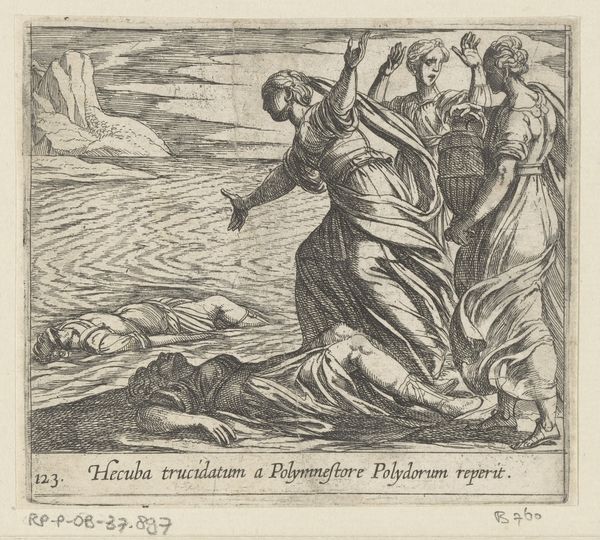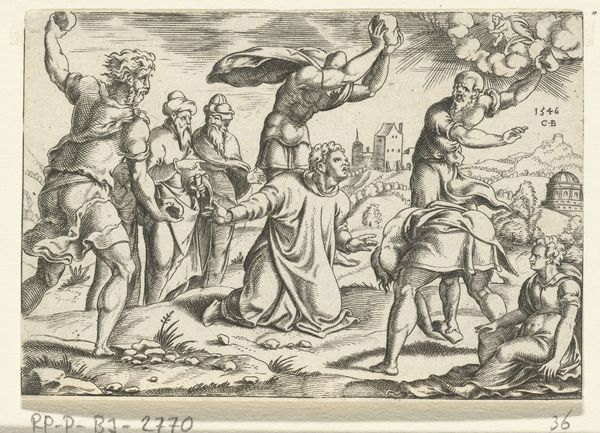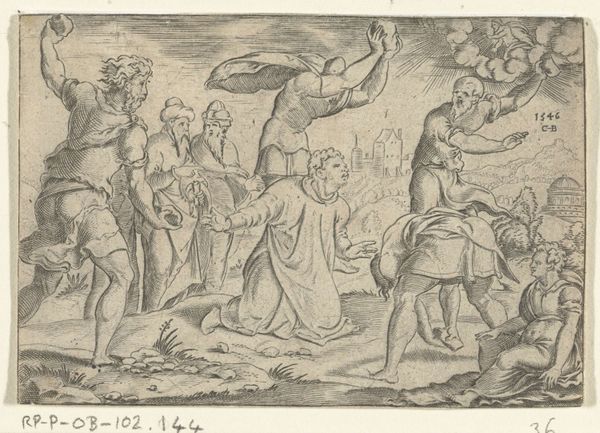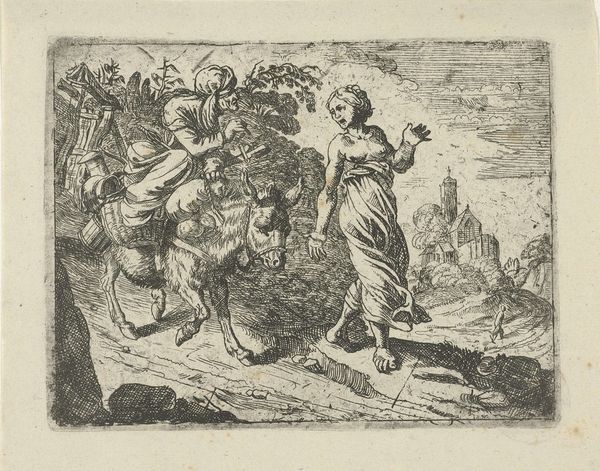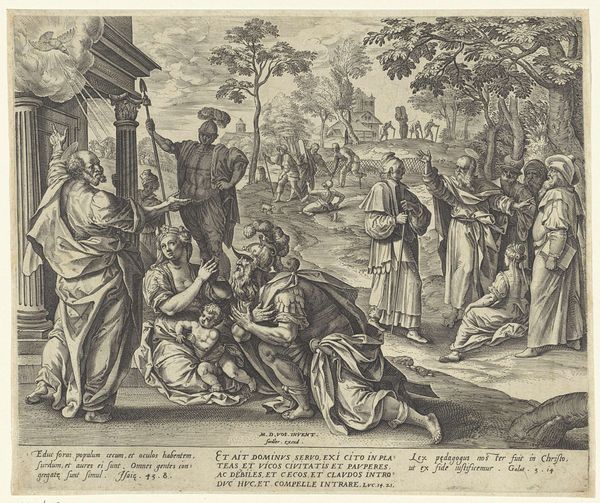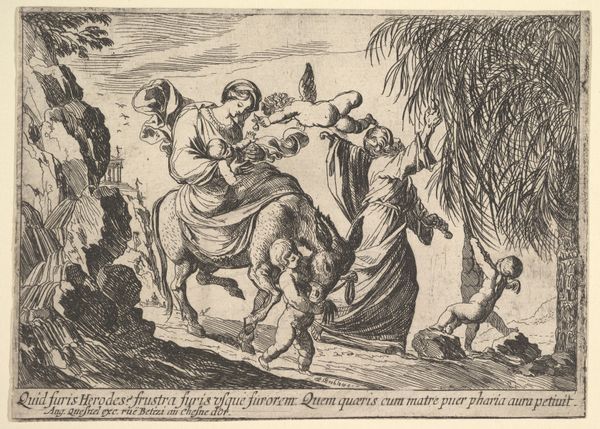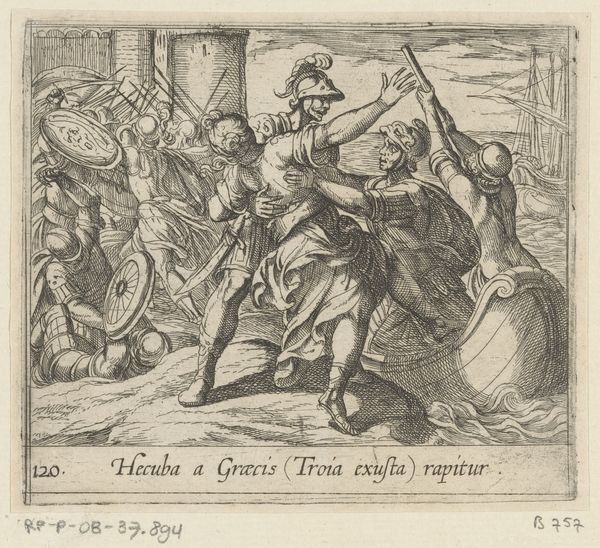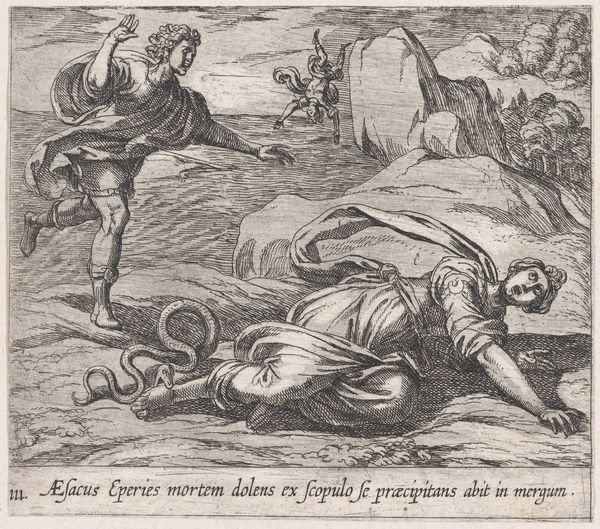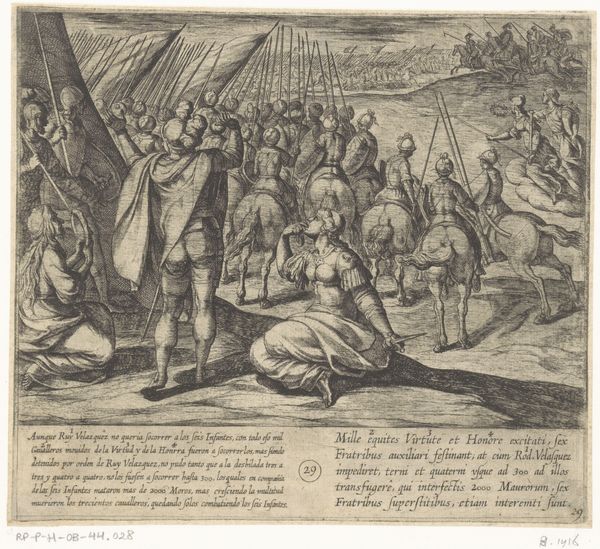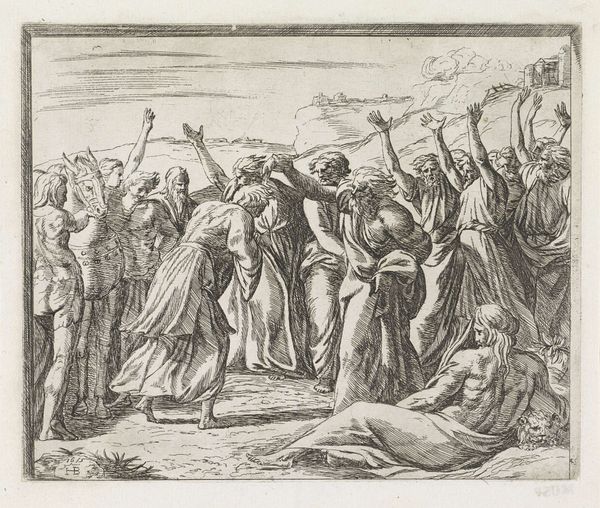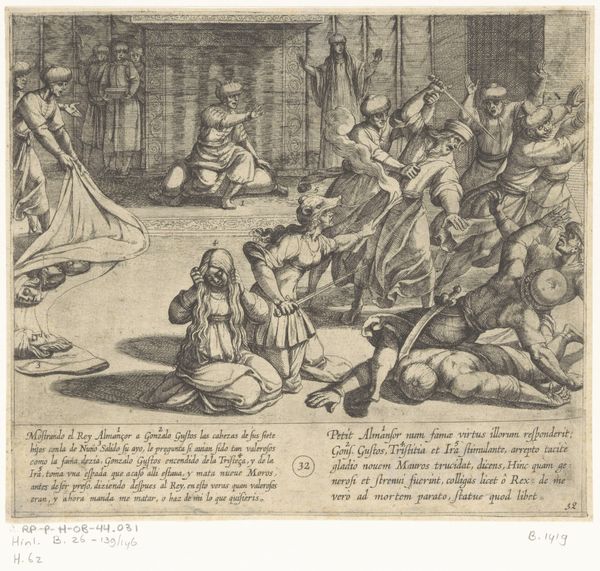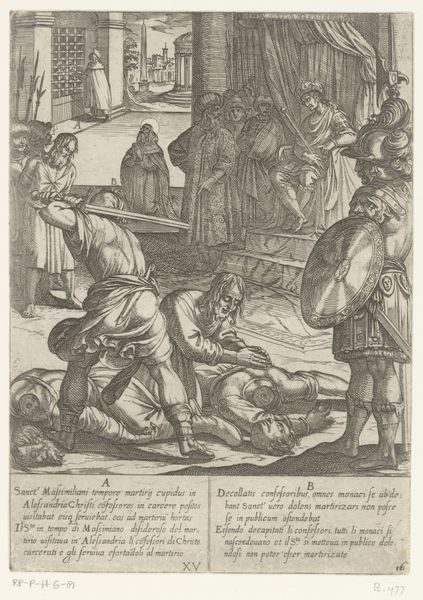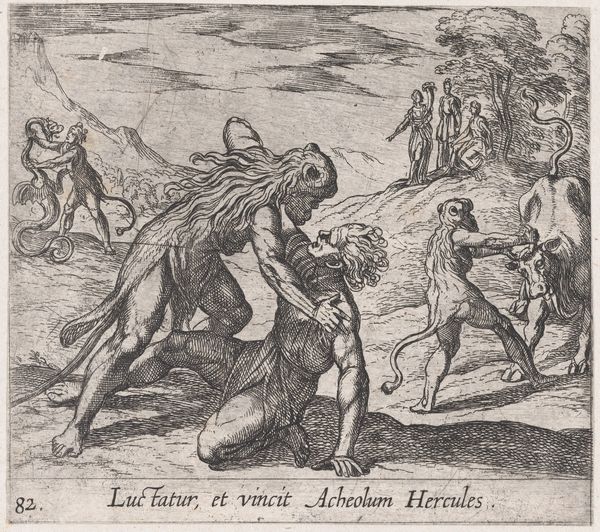
Plate 146: Hippolytus Saved from Death (Hippolitum Dianae impulsu ad vitam revocat AEsculapius et Virbius vocatur), from Ovid's 'Metamorphoses' 1606
0:00
0:00
drawing, print, engraving
#
drawing
#
narrative-art
# print
#
figuration
#
11_renaissance
#
horse
#
men
#
line
#
pen work
#
history-painting
#
engraving
Dimensions: Sheet: 3 15/16 × 4 1/2 in. (10 × 11.5 cm)
Copyright: Public Domain
Curator: This is Antonio Tempesta’s engraving from 1606, "Plate 146: Hippolytus Saved from Death" after Ovid’s Metamorphoses. It’s currently housed at the Metropolitan Museum of Art. Editor: My initial impression is one of resurrection, but the sheer density of lines, the materiality of the ink, gives it a shadowy, almost ominous feel, doesn’t it? Like life forcibly being dragged back. Curator: Indeed. The composition itself supports your reading. Note the carefully orchestrated interplay of horizontals and verticals. The lifeless body of Hippolytus stretches along the lower register, grounded, while Diana stands tall, her spear an emphatic vertical, gesturing toward renewal. Editor: Let’s not forget the figures laboring to restore Hippolytus – consider their social position as Aesculapius attends with learned intent and what Diana's involvement might imply for mortal intervention – that’s very revealing of contemporary belief systems regarding medicine, faith, and labor during the Renaissance, right? The labor of creation being explored materially through the making of the engraving itself. Curator: Precisely, that connection between artistic creation and divine intervention is key here, it's further enforced by the perspectival construction. Tempesta employs a complex, almost dizzying recession into space that leads the eye toward that distant chariot emerging from the sea. The meaning almost crystallizes in the convergence of lines. Editor: But think, that act of engraving itself demands a workforce to create those lines – each score bears testament to labor—how the plates were crafted, who printed them – to emphasize social strata both imagined in Ovid’s text, but manifested within Tempesta's studio itself. The distribution channels are just as compelling. Curator: While acknowledging the process, I’m more concerned with the visual language. The linear precision evokes classical sculpture while hinting at dynamic movement. That tension is so fascinating. Editor: In terms of materials, this print being accessible allows us to consider cultural transmission, a material means of accessing the classics – that would have extended far beyond elite circles due to the very reproducibility offered through printmaking. Curator: I hadn't considered the ripple effect of accessibility. Looking closely at its linear network again, I'm even more drawn to the balanced chaos. Editor: Exactly! A powerful reminder that art-making relies on distribution and dissemination, just as much as inspiration and technique!
Comments
No comments
Be the first to comment and join the conversation on the ultimate creative platform.
